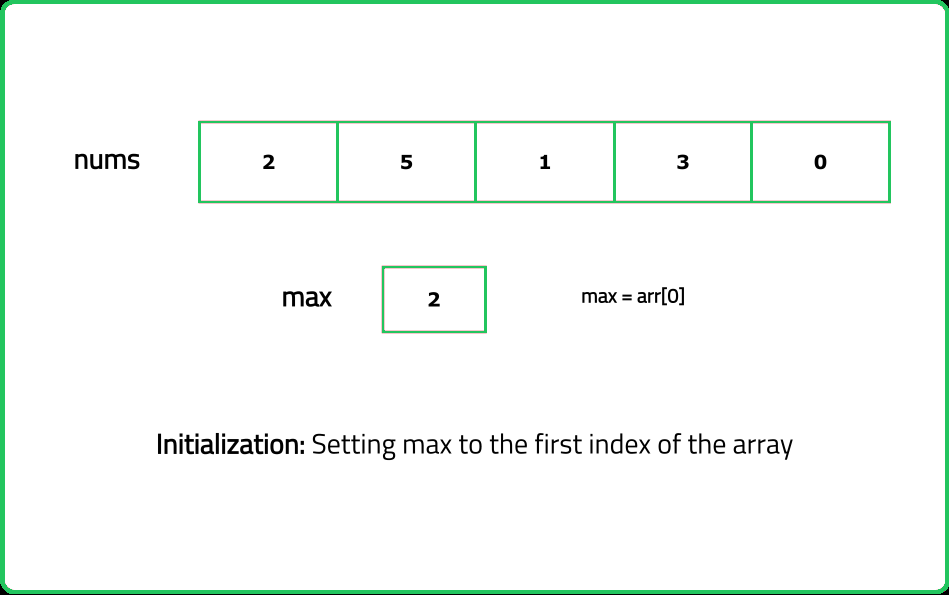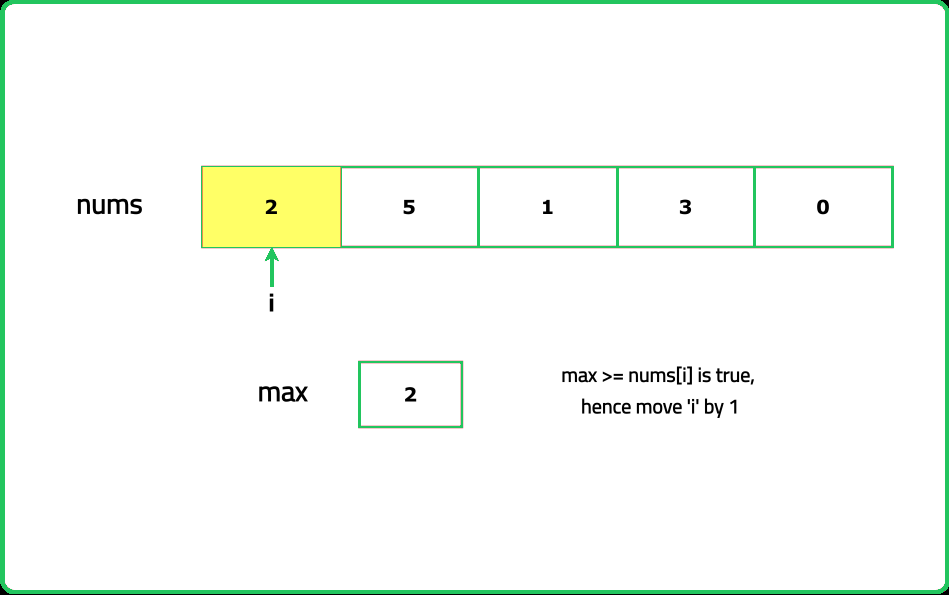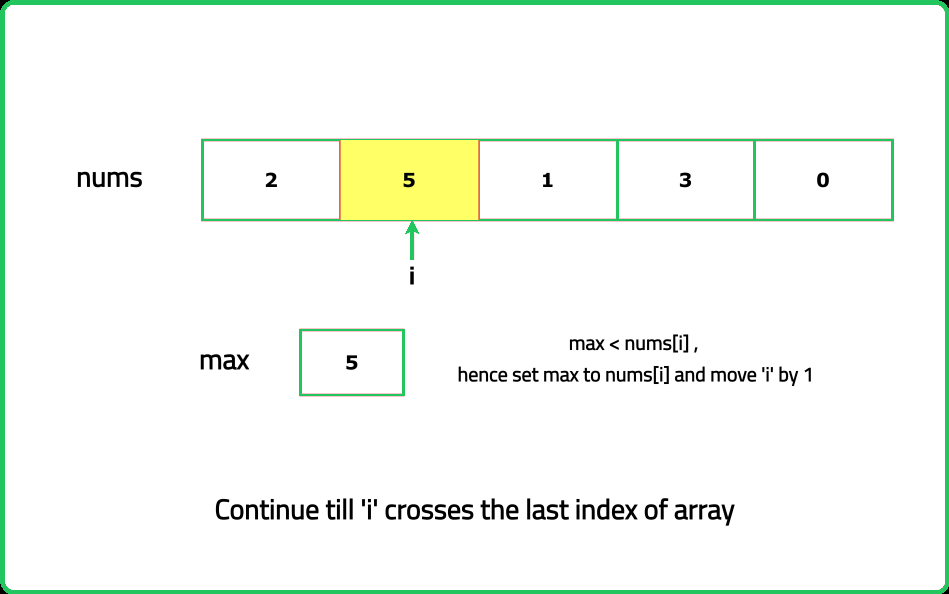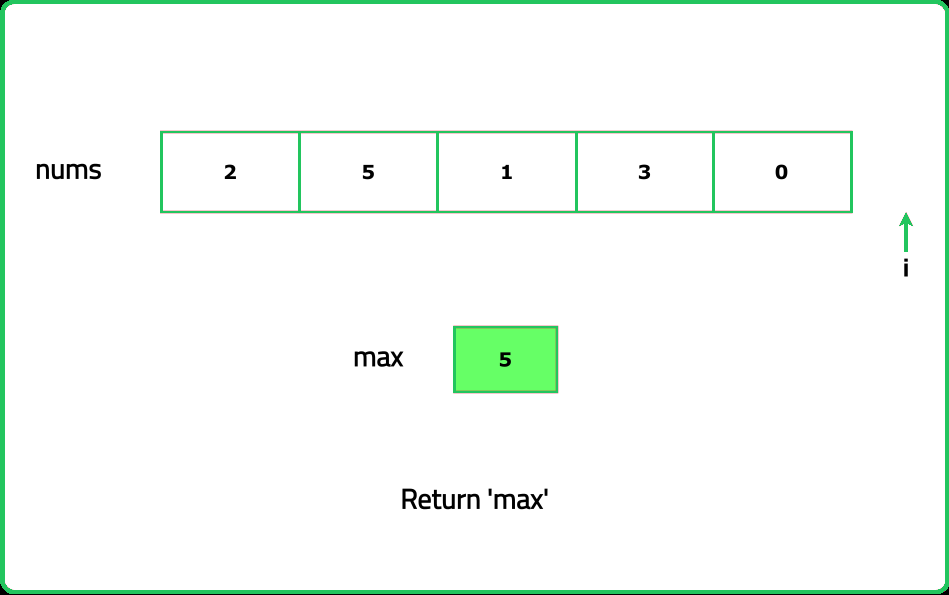Largest Element
Arrays
Fundamentals
Easy
- This problem's foundational concept is frequently used in data analysis software and algorithms
- For example, finding the largest or maximum value in a data set is commonly needed in statistical computations, such as when calculating the range (the difference between the highest and lowest values) or understanding the distribution of data
- Furthermore, in real-time systems or applications like weather forecasting and stock market analysis, determining the highest value is crucial to predict potential peaks
Given an array of integers nums, return the value of the largest element in the array
Examples:
Input: nums = [3, 3, 6, 1]
Output: 6
Explanation: The largest element in array is 6
Input: nums = [3, 3, 0, 99, -40]
Output: 99
Explanation: The largest element in array is 99
Input: nums = [-4, -3, 0, 1, -8]
Constraints
- 1 <= nums.length <= 105
- -104 <= nums[i] <= 104
- nums may contain duplicate elements.
Hints
- Start by assuming the first element is the largest, then iterate through the array to compare each element with the current largest.
- Use a single loop to traverse the array and update the largest element whenever a larger value is found.
Company Tags
Mastercard
Unity Technologies
Nutanix
Electronic Arts
Etsy
Cloudflare
Bain & Company
Bloomberg
Square
Johnson & Johnson
Seagate Technology
Oracle
Intel
Docker
Salesforce
American Express
Robinhood
Epic Games
Reddit
IBM
Lyft
Boston Consulting Group
McKinsey & Company
Target
Philips Healthcare
TCS
Cognizant
Accenture
Infosys
Capgemini
Wipro



